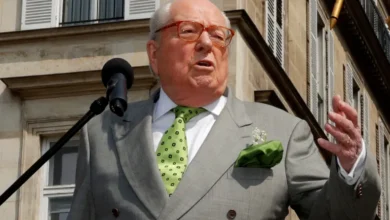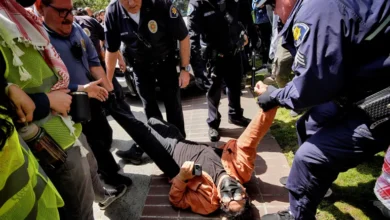My undergrads struggle to read – I think I know why
Greg Wrenn

Recently a student, a future teacher, told me she spends over six hours a day on TikTok. In my experience with my undergrads, that’s not untypical. Her addiction isn’t her fault, but it’s now her responsibility, and, more controversially, ours. I don’t want to imagine what her students will be like by the time she’s a mid-career educator like I am.
“I just can’t look away,” she told me, embarrassed.
Having taught for 25 years and attended many 12-step meetings for my own internet addiction, I’m an English professor who doesn’t buy TikTok’s latest efforts – namely limiting daily screen time to one hour by default for users under 18 – to protect our young people’s brains. It’s way too little too late.
In my environmental literature classes, I’ve seen firsthand the long-term effects of digital cocaine like TikTok on my undergrads. I’m on a mission, probably doomed, to get them to be more present – to appreciate the written word and the natural world, sometimes wearing my wetsuit and dive mask to get their attention when we’re discussing coral reefs and Ralph Waldo Emerson.
This is not woke indoctrination. My colleagues and I are scrambling to teach on the front lines of a student mental health crisis.
Too many of the undergrads taking the course I currently teach, Environmental Literature of Wonder and Crisis, cannot read. They’re literate, of course, but unable to sit long enough to read a chapter from Henry David Thoreau’s Walden or an essay about an Australian ecofeminist nearly mauled to death by a crocodile. A few have confided they’ve never read a book cover to cover in their lives. Few would freely choose to take this class, but to graduate they need three English credits.
At its heart, this is a crisis of attention. Distractedness and overwhelm are its symptoms. In an informal, anonymous class poll, just 13 percent of my nearly 300 students this semester said they did not suffer from intense anxiety on a regular basis – that shocked me. A third reported that their anxiety keeps them from reading the assigned texts. Half said they have trouble paying attention when reading, even when their phones are off. Reading and reflective time in nature – powerful anti-anxiety meds in themselves – simply can’t compete with TikTok. And neither can easy-going, in-person conversation with sustained eye contact, or a 75-minute college lecture.
My students are overstimulated – and depressed and exhausted – from mainlining TikTok and Instagram. Though further study is needed, research has shown a strong correlation between social media use and mental health challenges. So I shouldn’t really be offended when they ask me to create exam study guides for them.
Their brains, rewired by the likes of TikTok, can’t keep up with all the material. Since high school, TikTok’s hyper-personalised algorithms have been barraging them with 10-second videos, individually tailored to maximise the dopamine hit and the company’s profits. They’re hooked, as recent neuroscience research suggests, the parts of the brain involved in addiction lighting up as they watch an eight-foot-tall giraffe being made from chocolate or a chipmunk stuffing its cheeks with nuts. Like many of us, they deal with their anxiety in ways that end up amplifying it.
Every semester I find myself lowering class expectations, in fear of too many Fs as final grades. I also fear that literature – a repository of our dearest values, a way to grow empathy and imagination, and slow down – is going the way of the cassette tape and dodo bird. With environmental literature, I invite my students to be more present, appreciative of natural beauty and the beauty of stories and words. As catastrophic climate change looms, there’s no time to waste – we have to appreciate the beauty of nature now. Yet so few of my students take the time to truly appreciate the national forest and the national park that our campus is sandwiched between.Unlike me, my students are digital natives born in the years after 9/11. As children, many of them have never been allowed to roam freely outside and play. When they were in kindergarten, the Oxford Junior Dictionary replaced words like acorn, moss, and fern with database, MP3 player, and broadband. So of course they’re anxious. They’re still young on a planet whose long-term habitability is uncertain. Way too often stuck indoors alone, pecking at their screens and not sleeping. Craving views of their Instagram stories as if their survival depended on it. If they haven’t attempted suicide, they know friends who have.
Have they ever sat under a tree and stuck with a challenging book with paper pages? Have they gazed up at the clouds without their phones for a while and in all the puffiness seen acorns and moss and ferns? Or is nature too boring, best appreciated as a backdrop for selfies?
Do they feel wonder?
These are not hysterical questions.
I want them to feel the wonder I felt at summer camp when 14 of us held hands around a giant oak. I felt instantly calmer in its shade. I also want them to love poetry, to gaze at William Wordsworth’s daffodils and sit in Walt Whitman’s grass.
I too have felt my attention and imagination – my very humanity – dying back. In this numb blur of a cyborg life on an overheating world, what would it take to be happier? It might take slowing down and looking at something real. It might mean going outside and cultivating gratitude and grit, even when we don’t feel like it. Finding supportive, in-person community, wherever the heck that is.I still find some hope for the future when I teach English majors and creative writing minors, who seem to use social media less often than their non-major peers.
A couple of semesters back, early on in my eco-writing workshop, The Environmental Imagination, my 15 students and I were discussing a chapter in Robin Wall Kimmerer’s Gathering Moss, “Learning to See,” a title that could be our three-word syllabus. Nature itself, not my words so much, did a lot of the teaching in this class. I asked them to look up at the maple next to us and tell us what they saw.
“Pointy leaves,” said one, still shy.
“Rough, whitish bark,” said another softly.
I asked them to look again, as if this maple were the last tree on earth. “What do you see,” I asked, “that no one else does?”
“That one leaf at the edge of that branch,” Jacob* said, pointing and squinting, “is lighter than the others and has a torn edge”. Next thing I knew he was standing under the maple and feeling the bark slowly with his hands, as if it were ancient pottery, and then Pierre took his place. It doesn’t smell like much, they said. After some laughter and some awkward silences, Bonnie was up and sticking out her tongue to taste the bark.
In a lull in our discussion, I looked out at my students. Most of them had done the reading, with varying levels of comprehension; they didn’t vape in class – they wanted to be here. I saw talented, humane Chloe, who would go on to write about body dysmorphia and a slug. Soulful, concerned Dan, who in his first essay will, in the roiling of the stream, see cultural chaos writ wet. Quiet, fierce Carmen, who, after looking at a hen-of-the-woods mushroom on a trail, will write an elegy for her Bolivian abuelita who fed her chicken salteñas with raisins and olives.
Students like them give me hope. I also ache for them.
That semester, we didn’t create a left-wing re-education camp. Instead, we created in miniature the kind of respectful, just, evidence-based, ecologically attuned society many of us want to live in. As I taught this exceptional class, I was reminded that not all young people need to be taught to care about books or the earth. Neither did I have to make the case to them that this life of fireflies and gnarled cedars is worth staying alive for. “It’s not enough to name the problem,” I told them as they worked on their eco-manifestos towards the end of the semester. “What are we going to do about it?” This applies to both the ecological crisis and our crisis of attention.
What’s at stake here is our collective brain. The basic sanity that allows society to go on. If we’re going to deal with the climate crisis, we must be fundamentally undistracted and creative, full of resolve and courage and cooperation. The calamities of this century will require thoughtfulness, social cohesion, and focus, even if we don’t have it to give. If we do nothing about this attention crisis in our young people – and in almost all of us – the climate crisis isn’t going to get bad enough to matter.










